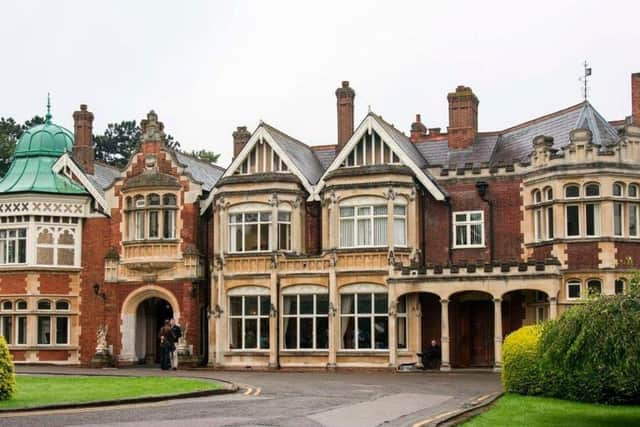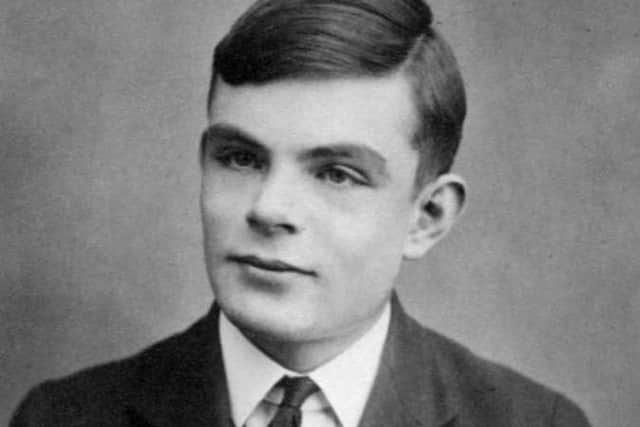Elon Musk and ChatGPT boss will be at Bletchley Park for AI Summit - the history of the country estate
and live on Freeview channel 276
World leaders and gatekeepers of the tech world will descend upon an English country house for a summit on a topic that could have far-reaching implications. The likes of Rishi Sunak, Elon Musk, Kamala Harris, and Sam Altman will all be present at Bletchley Park for The AI Safety Summit.
The tech bosses and leading politicians will discuss the threats to people's jobs that artificial intelligence presents during the landmark summit. And while some leaders like Joe Biden and Emmanuel Macron have reportedly snubbed invites, the event is still likely to make headlines as the first global summit on AI safety.
Advertisement
Hide AdAdvertisement
Hide AdQuite fittingly, it is all taking place at a place that was once home to Britain's world-leading tech geniuses. Bletchley Park was where Nazi messages were decoded during the Second World War - largely thanks to Alan Turing, Joan Clarke, and others.
With the summit taking place at what is now a museum dedicated to the all-important work of the codebreakers who helped the Allies defeat the Axis, NationalWorld takes a look at the history of Bletchley Park.


When was the Bletchley Park built?
The site of Bletchley Park appears in the Domesday Book of 1086 as part of the Manor of Eaton. Author and politican Browne Willis built a mansion there much later in 1711, but after Thomas Harrison purchased the property in 1793 this was pulled down.
It was first known as Bletchley Park after its purchase by architect Samuel Lipscomb Seckham in 1877. He built a house on the site but the overall estate was bought only six years later by financier and politician Sir Herbert Samuel Leon, who expanded the then-existing house.
Advertisement
Hide AdAdvertisement
Hide AdArchitect Landis Gores called the country house a "maudlin and monstrous pile" combining Victorian Gothic, Tudor, and Dutch Baroque styles.
Fast forward to 1938 and the mansion could have been lost forever. The site was bought by a housing developer with plans for an estate, but the then head of Britain's Secret Intelligence Service swopped in to buy the property for what is around £408,000 today.
Bletchley Park during World War II
Codebreaking first began at Bletchley Park in 1938. A small group moved into the mansion under the cover story that they were a shooting party.
Only a year later, war broke out in Europe as a result of German aggression. Bletchley Park was an ideal site for Britain's intelligence service during the Second World War.
Advertisement
Hide AdAdvertisement
Hide AdIt was close to Bletchley railway station where the line between Oxford and Cambridge ran through - where many of the codebreakers would come from. During the war, Germany believed its secret codes for radio messages could not be deciphered by the Allies.
But careful and painstaking work at Bletchley Park meant codebreakers could eventually crack the code of German communications, and eventually defeat the Nazis.
Famed codebreaker Alan Turing was one of those working at Bletchley Park at the time. Turing designed a device known as a Bombe which was pivotal to saving lives in the war,


Many of the Nazi messages that were intercepted were encrypted using Enigma machines. These devices typically changed settings every 24 hours and with 159 quintillion possible combinations every day, the staff at Bletchley Park worked around the clock to break the settings by hand.
Advertisement
Hide AdAdvertisement
Hide AdA mechanical method for identifying the keys was needed and Alan Turing designed the Bombe to speed up the process. Huts 11, 11A and 11B were the home of Bombe operations at Bletchley Park and in 1942, Turing yielded the first systematic method of cracking the Nazi codes.
What happened to Alan Turing after the war?
Turing took his own life in 1954, two years after being outed as gay. Homosexuality was still a crime in Britain at the time, and Turing was convicted of “indecency.” He died from eating an apple laced with cyanide aged just 41.
At the time of his death, the British public had no idea what he had contributed to the war effort. Sixty years later, Queen Elizabeth II officially pardoned Turing.
Comment Guidelines
National World encourages reader discussion on our stories. User feedback, insights and back-and-forth exchanges add a rich layer of context to reporting. Please review our Community Guidelines before commenting.
